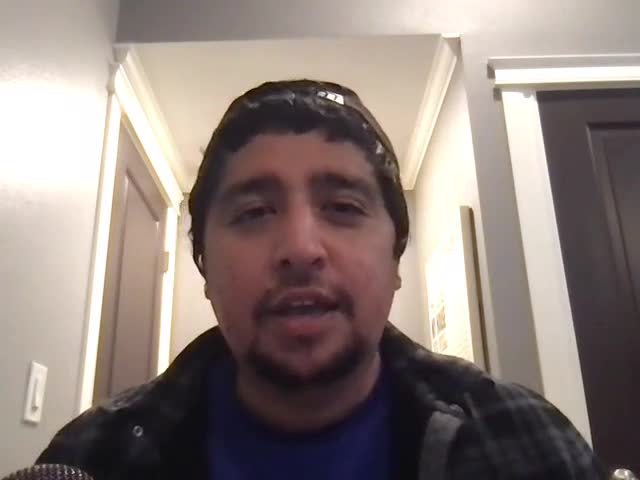🎵 Showcase your kid’s musical talent and win up to $1,000 in prize value!Enter Now
This class is no longer available, but we found something similar!
180
($90 value)

Summer Coding Camp: Learn How to Create an Isometric Game in Unity
Ages 11-16
Live Group Class
Live video meetings
5x per week, 1 week
2-5 learners per class
50 min
Overview

Live Group Class
Meet over live video meetings
5 live meetings
4 hrs 10 mins in-class hoursClass Experience
This class is also offered as a 5 week course: https://outschool.com/classes/learn-how-to-create-an-isometric-game-in-unity-58vCi5XJ
#builder
Students should have experience using unity or have completed my one of my beginner unity courses before taking this class. Please reach out to me if you are interested in taking this class but haven't taken my beginner unity class yet.
In this course, students will learn how to create an isometric (2.5D) game using Unity which is a game engine that will allow us to create our game quickly and export it to any device. I will show and explain how to create parts of the game while students follow along. In this course we will be exploring the drag and drop functionality of unity as well as learning how to code in C#. We will be covering basic coding concepts like working with variables, methods, if statements, and the game loop so no coding experience is required. I will also give out a challenge after every class so students can experiment and grow their knowledge. By the end of the course students will have the knowledge of how to create a basic 2.5D game using Unity and C#. Please make sure that you can download the free version of Unity from here: https://store.unity.com/download-nuo
Please download unity before the class starts so you can make sure it will work with your computer/laptop and it will help ensure all students are ready to start the game in the first class instead of waiting for the program to download. Follow these steps to download: https://cdn.filestackcontent.com/W2iK4LIrRMCadUs5dztE
Class 1 and 2:
I will show and guide students how to setup our Unity project . (Please Have Unity Installed)
Then they will learn how to load assets like isometric sprites and how to display them properly. Students will also create the map for our game and start adding collision layers, character movements, and start creating the player animations.
Class 3 and 4:
We will complete the character controller and the animation controller and we will also start adding the decoration layer to the map. Also, if time allows we will add the pick up items and their functionalities to the game.
Class 5:
We will complete the character controller and the animation controller and we will also start adding the decoration layer to the map. We will add the pick up items and their functionalities to the game.
Topics the course covers:
Navigating in unity
How to import assets to unity (ie. sprites, animations)
How to create Animations
How to work with the Animation controller
Working with Rigid bodies
How to create an isometric map
How to create collision layers for the map
Public and private variables
If statements
Methods
Keyboard control to move the player and play animations accordingly
Collect items
Track the score
Please note: Chromebooks, tablets and iPads will not work for this class. Also, if the student is outside of the age range but you think they still may be suitable for this class, please contact me before signing up.
Please review my class rules and policies: https://cdn.filestackcontent.com/ossRr9woS9idai4ZVpuFOther Details

Supply List
Download and install unity: https://unity.com/ Download and install Visual studio code: https://code.visualstudio.com/
2 files available upon enrollment

External Resources
In addition to the Outschool classroom, this class uses:

Sources
https://unity.com/
Meet the teacher
Teacher expertise and credentials
I have a degree in computer science and have been coding for over 10 years. I have also worked a few years in the industry creating desktop games. As someone who was originally self taught I know how important it is to learn code by being very hands-on and experimenting, which is how I will be teaching.Reviews
7 total ratings, 5 with reviews
My son enjoyed this class and thought the teacher was great. Jon Lopez...
Christine F.on Jun 28, 2022
Parents also liked

Video Game Design (Self-Paced Course)- Part 2
$9 per week
Shawn D Walk (Create2Discover)
4.9
(1,402)
Self-Paced Class
6 weeks
7-10

Video Game Design (Live Sample Class)- Beginner
$15 per class
Shawn D Walk (Create2Discover)
4.9
(1,402)
Group Class
1 wk, 1/wk, 1 hr
7-10
Next session at 7 PM on Wed 11/19

Video Game Design (Live Group Course)- Beginner
$17 per class
Shawn D Walk (Create2Discover)
4.9
(1,402)
Group Class
6 wks, 1/wk, 1 hr
7-10
Next session at 5:45 PM on Tue 11/25

Video Game Design (Self-Paced Course)- Beginner
$9 per week
Shawn D Walk (Create2Discover)
4.9
(1,402)
Self-Paced Class
6 weeks
7-10

Private Roblox Studio Tutoring / Roblox Scripting / Video Game Design
$70 per session
Miss Jennifer - Roblox Scripting / Coding
4.9
(662)
1-on-1 Lessons
On Demand
6-18
Next session at 6 PM on Thursday

Roblox Studio for Beginners - Video Game Design
$15 per class
Miss Jennifer - Roblox Scripting / Coding
4.9
(662)
Group Class
1/wk, 40 min
7-12
Next session at 10 PM today

Coding and Video Game Design for Ages 6 - 11
$30 per class
Usama Puri
4.4
(23)
Group Class
1/wk, 55 min
6-11
Next session at 8 PM on Sunday

Private Roblox Studio Tutoring / Roblox Scripting / Video Game Design - 30 Mins
$35 per session
Miss Jennifer - Roblox Scripting / Coding
4.9
(662)
1-on-1 Lessons
On Demand
6-18
Next session at 2 AM on Friday

1:1 Private Class: 3D Video Game Design Assistance W/ Atmosphir App (Ages 5+)
$45 per session
Raymond Mullikin (Raytoons Comics)
4.9
(528)
1-on-1 Lessons
On Demand
5-18

Internet Video Game Designers With HTML5 (Ages 13+)
$23 per class
Raymond Mullikin (Raytoons Comics)
4.9
(528)
Group Class
6 wks, 1/wk, 50 min
13-18
Next session at 11 PM on Fri 11/21

Internet Video Game Designers With HTML5 (Ages 7 To 12)
$23 per class
Raymond Mullikin (Raytoons Comics)
4.9
(528)
Group Class
6 wks, 1/wk, 50 min
7-12
Next session at 5:05 PM on Thu 11/20

Stop-Motion Video Game Designers! Code Crafty 3D Games With Clay, Toys & Crafts!
$30 per class
Raymond Mullikin (Raytoons Comics)
4.9
(528)
Group Class
6 wks, 1/wk, 50 min
9-14
Next session at 1 AM on Sunday

🕹️ Intro to Video Game Design! Make Characters & Scenes W/ Simple Coding Intro
$23 per class
Raymond Mullikin (Raytoons Comics)
4.9
(528)
Group Class
4 wks, 1/wk, 50 min
6-11
Next session at 12 AM on Monday

AI Game Design Group Taster: Code Your Own Snake Video Game (Ages 13-15)
$16 per class
Mr. Kadeem
4.0
(2)
Group Class
1 wk, 1/wk, 55 min
13-15
Next session at 10 PM tomorrow

AI Game Design 1-On-1 Taster: Code Your Own Snake Video Game (Ages 13-15)
$32 per session
Mr. Kadeem
4.0
(2)
1-on-1 Lessons
On Demand
13-15
Next session at 10 PM tomorrow

Coding & Gaming Club: Unlocking the Secrets of Game Design for Young Innovators
$20 per class
Bright & Smart ~ Engineering Skills for Kids
4.8
(217)
Group Class
1/wk, 1 hr
9-13
Next session at 12 AM on Tue 12/2
Are you planning to use state funding, such as an Education Savings Account (ESA), Micro-grant or scholarship to help pay for your learner’s education?
.png?fit=crop&height=144&width=144&quality=80&strip=true)
.jpg?fit=crop&height=144&width=144&quality=80&strip=true)


